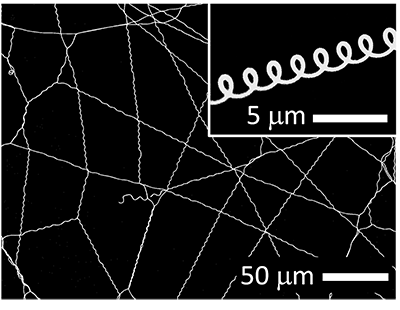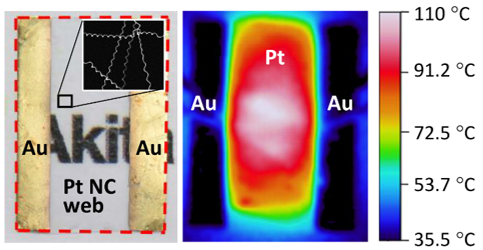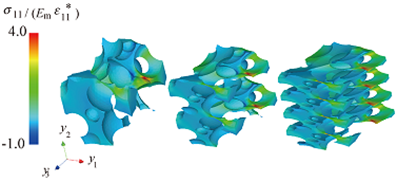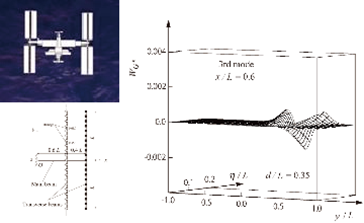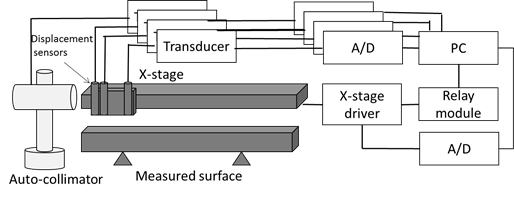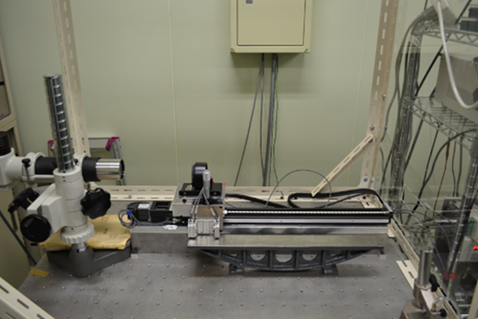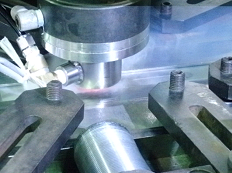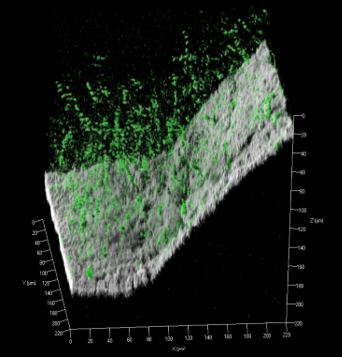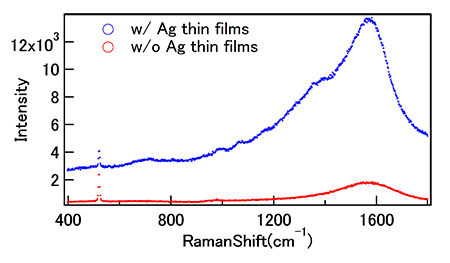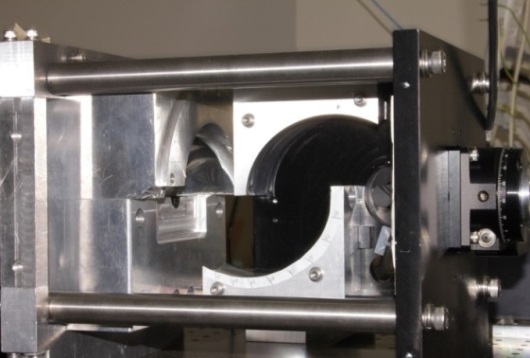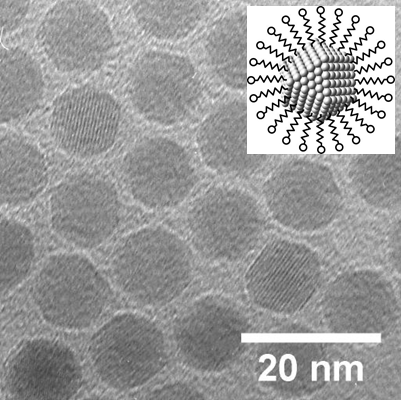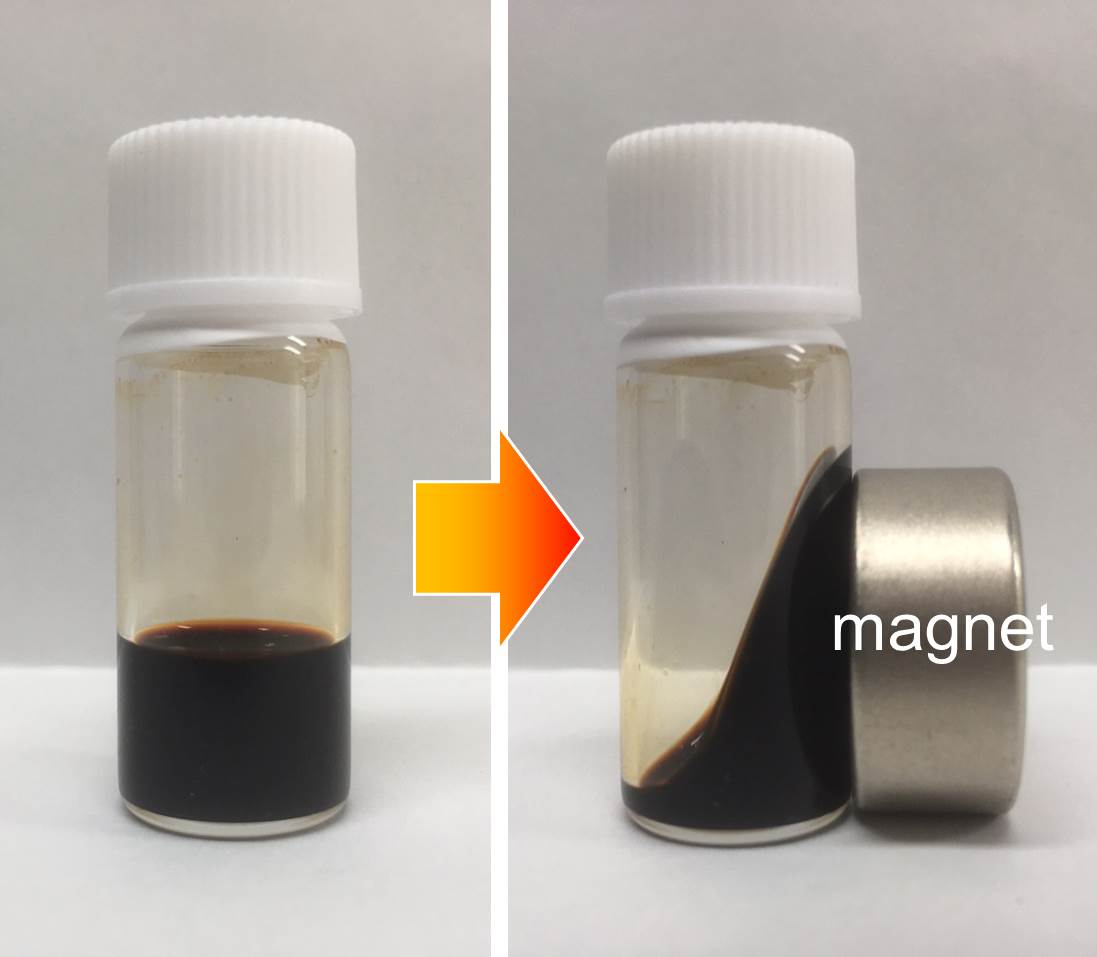Nano-mechanics field laboratories
Micro/nano material mechanics laboratory
Staffs
- Mikio MURAOKA (Professor, Dr. Eng.)
- Xu ZHAO (Lecturer, Dr. Eng.)
- Hiromi ISHIKAWA (Technical Staff)
- Yukiko ISHIGAMI (Staff)
Research interests
Applications of metallic nanocoils (NCs), especially in electromagnetic wave absorption, flexible transparent electrode, transparent film heater, sensors, and actuators. Suppression or applications of atomic diffusion induced by high current density or stress, especially in microelectronics, fabrication of micro/nano materials.
Figure 1 shows a fabricated Pt NC web (Ref.: Muraoka et al., Method for producing metal nanocoil, Patent PCT/JP2016/053789).
Figure 2 shows a flexible transparent film heater (10 mm × 7 mm) made by transferring the Pt NC web onto a 50 μm-thick silicone rubber membrane (left image). The background of the region of Pt NC web can be clearly seen. The infrared thermography image (right image) shows the temperature distribution of the film heater at an applied constant voltage of 16.5 V. An average temperature being about 84.5 ℃ is achieved.
| Research themes |
|---|
|
Computational mechanics of composite materials and structures
Staff
- Yotsugi SHIBUYA (Professor, Dr. Eng.)
Research interests
Functional materials and structures with many physical phenomena at multiple scales are much interesting research area for applications to modern technology. Analysis of composite materials as functional materials has been performed with focusing attention to microstructure of materials and damage. The damage in composite materials is categorized as fiber breakage, matrix crack, delamination and so on. Since a final failure starts from a small damage, it is important to understand the failure mechanism of composite materials and detect the damage in composite structures.
Figure 1 shows stress distribution in micro-scale structure of reinforced porous composites. The model with periodic structure is used to make efficient numerical calculation.
Figure 2 shows the damage detection of a large scale flexural structure such as space structure. Excited vibration signal at several points is analyzed and the damage is detected as a peak of the continuous wavelet analysis.
| Research themes |
|---|
|
Precision engineering
Staff
- Eiki OKUYAMA (Professor, Dr. Eng.)
Research interests
Precision measurement, especially surface profile or small displacement of mechanical components. Target repeatability is within sub-micrometer. Error separation technique, related to a straight line or a circle. Precision parasitic error motion measurement of instruments or machine tools, independent of thermal drift. Precision mechanism design, small displacement stage with high repeatability for industrial fields.
Previously, a multi-step technique for the division of length was used to decide the short scale from the large scale. An important requirement of this multi-step technique for the division of length is to keep high accuracy at several key points. We applied this technique to the integration method for surface profile measurement and proposed a combination of the large-scale integration method and the short-scale integration method.
| Research themes |
|---|
|
Structural material engineering
Staffs
- Yasuyuki MIYANO (Associate Professor, Dr. Eng.)
- Yoshiaki ITO (Technical Staff)
Research interests
Material properties evaluation, especially strength of welded sections or corrosion of materials in natural environment. FSW (Friction stir welding) on middle to high carbon steel. Mechanical properties evaluation for FSW joints. Metallurgical inspection, nano-scale grain analysis for welded joints. Elucidation of the mechanism of MIC (Microbiologically Influenced Corrosion). Biofilm imaging on metal surface utilizing a newly developed observation technique.
Fig.1 Overview of FSW processing
Friction stir welding on some types of carbon steel was studied. Friction stir welded joint was successfully produced under various conditions. Welded joints properties and metallurgical structure were investigated.
Fig.2 3D Biofilm imaging study utilizing a newly developed technique
Biofilm formation process on metal surface was observed utilizing a newly developed CSLM systems. MIC initiation process was analyzed in in-situ observation systems. We proposed innovated research style for MIC from the point view of material science.
| Research themes |
|---|
|
Raman spectroscopy in mechanical engineering
Staff
- Makoto YAMAGUCHI (Associate Professor, Dr. Sci.)
Research interests
Structural characterization of the sub-surface layer is becoming important in nanotechnology. Raman spectroscopy which is a light scattering phenomenon resulting from the interaction of light and material are useful technique to evaluate the crystal structure, residual stress, and so on.
Figure 1 shows surface enhanced Raman scattering (SERS) spectra on Ag coated ta-C. The signal intensity was up to several times higher than that of surface without coated. of spectrum. We applied SERS technique to characterization for structural of surface layer.
Raman spectroscopy system using quadruple ellipsoidal mirrors is shows in fig. 2. The ellipsoid mirror was cut in half along a plane through the major axis and cut again along a plane through a focus perpendicular to the major axis. The incident angle to surface can be set at an arbitrary value by rotating a mirror.
| Research themes |
|---|
|
Functional nanomaterials engineering
Staff
- Yoshiyuki YAMAMOTO (Associate Professor, Dr. Sci.)
Research interests
It is well known that the physical properties of materials are modified due to size and surface effects when their size is reduced to the nanoscale. In particular, the ratio of atoms appearing on the surface to the number of atoms constituting the nanoparticles is very large. Consequently, the physical properties of these nanoparticles are expected to be quite different from the bulk counterparts. Furthermore, magnetic nanoparticles (magnetic fluid) are recently expected to be applied to medical and biological fields such as magnetic fluid hyperthermia, drug delivery system (DDS), MRI contrast agent, magnetic separation, etc. We study these nanomaterials by performing from synthesis to evaluation, aiming to contribute to the society by exploring the novel fundamental physics and application of them.
Figure 1 shows the TEM image of the synthesized iron oxide nanoparticles with a uniform particle size of about 10 nm. As shown in the inset, the surface of the nanoparticles is modified with a surfactant.
Figure 2 shows a photograph of iron oxide nanoparticles dispersed in a solvent. In the absence of a magnetic field, the magnetic moments of the particles are randomly oriented in the superparamagnetic state, but when the magnet is brought closer, they are oriented to the magnetic field and attracted.
| Research themes |
|---|
|


